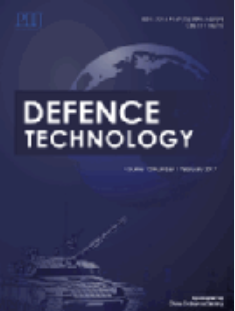热细胞结构的尺寸相关热传导:一种表面富集的多尺度方法
IF 5
Q1 ENGINEERING, MULTIDISCIPLINARY
引用次数: 0
摘要
本文研究了微观结构如何影响细胞结构的均匀导热性,并揭示了表面诱导的尺寸依赖效应。这种影响与细胞结构的多孔微观结构特征有关,这源于孔隙度和孔隙的分布。与纳米尺度上声子驱动的表面效应不同,基于完全分辨的三维数值模拟发现,热细胞结构的宏观表面机制是由微观结构引起的热传导路径变化。表面区域由微观结构决定,以本征长度为特征。利用表面机制下的外在和内在长度尺度之间的耦合,建立了一种富表面多尺度方法来精确捕获复杂的尺寸相关导热系数。传统的多尺度方法所要求的尺度分离原理不满足所提出的多尺度方法的要求。通过对薄壁超材料结构有效热导率的模拟,证明了富表面多尺度方法的巨大潜力。与传统的多尺度方法相比,富表面多尺度方法具有更高的精度和高保真有限元方法的效率。本文章由计算机程序翻译,如有差异,请以英文原文为准。
Size-dependent heat conduction of thermal cellular structures: A surface-enriched multiscale method
This paper examined how microstructure influences the homogenized thermal conductivity of cellular structures and revealed a surface-induced size-dependent effect. This effect is linked to the porous microstructural features of cellular structures, which stems from the degree of porosity and the distribution of the pores. Unlike the phonon-driven surface effect at the nanoscale, the macro-scale surface mechanism in thermal cellular structures is found to be the microstructure-induced changes in the heat conduction path based on fully resolved 3D numerical simulations. The surface region is determined by the microstructure, characterized by the intrinsic length. With the coupling between extrinsic and intrinsic length scales under the surface mechanism, a surface-enriched multiscale method was developed to accurately capture the complex size-dependent thermal conductivity. The principle of scale separation required by classical multiscale methods is not necessary to be satisfied by the proposed multiscale method. The significant potential of the surface-enriched multiscale method was demonstrated through simulations of the effective thermal conductivity of a thin-walled metamaterial structure. The surface-enriched multiscale method offers higher accuracy compared with the classical multiscale method and superior efficiency over high-fidelity finite element methods.
求助全文
通过发布文献求助,成功后即可免费获取论文全文。
去求助
来源期刊

Defence Technology(防务技术)
Mechanical Engineering, Control and Systems Engineering, Industrial and Manufacturing Engineering
CiteScore
8.70
自引率
0.00%
发文量
728
审稿时长
25 days
期刊介绍:
Defence Technology, a peer reviewed journal, is published monthly and aims to become the best international academic exchange platform for the research related to defence technology. It publishes original research papers having direct bearing on defence, with a balanced coverage on analytical, experimental, numerical simulation and applied investigations. It covers various disciplines of science, technology and engineering.
 求助内容:
求助内容: 应助结果提醒方式:
应助结果提醒方式:


